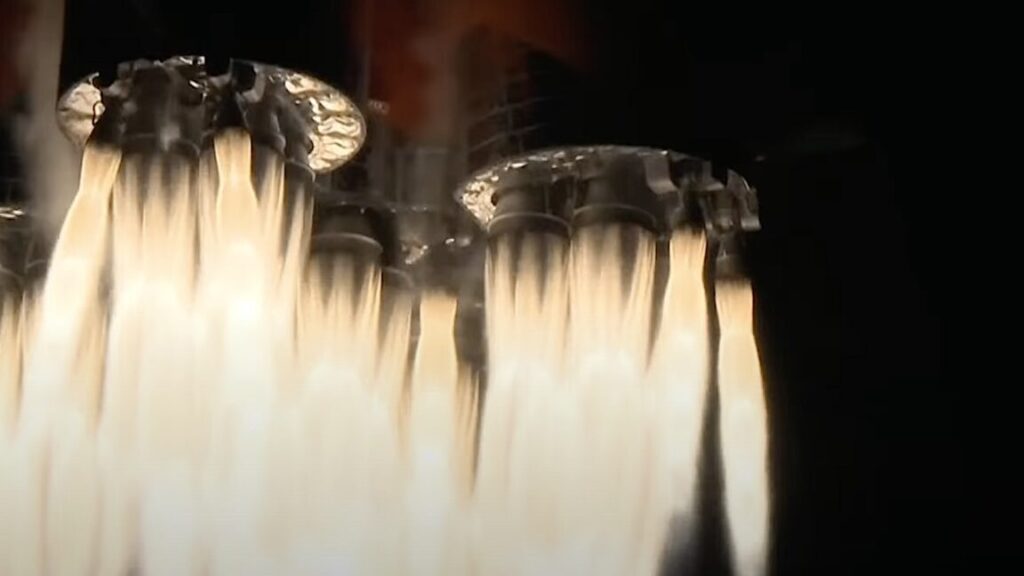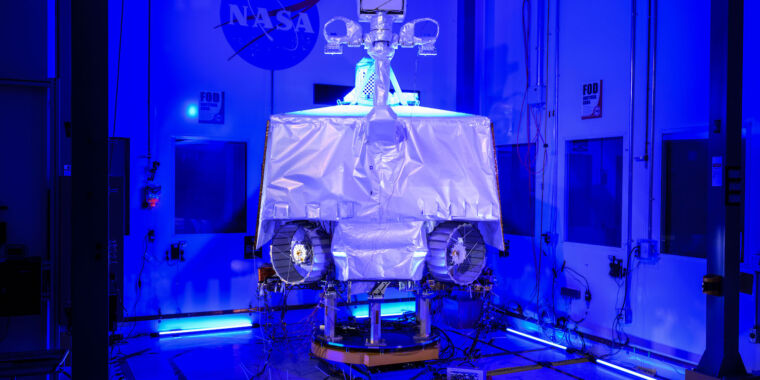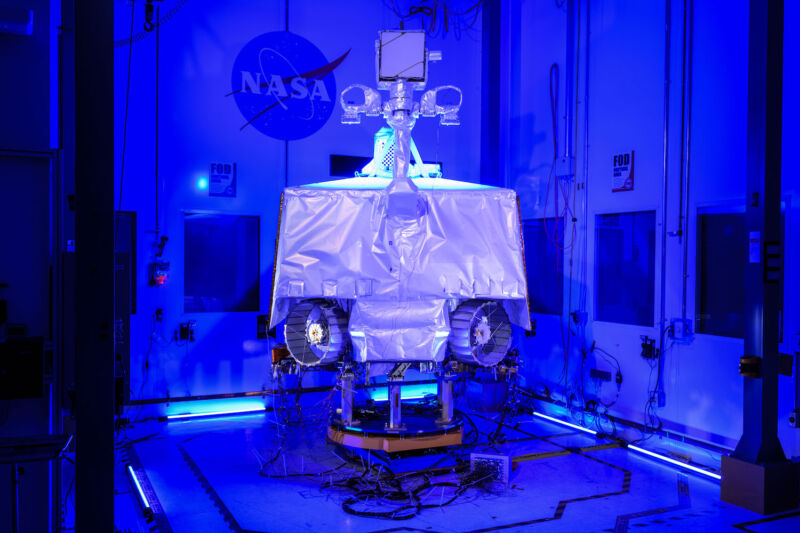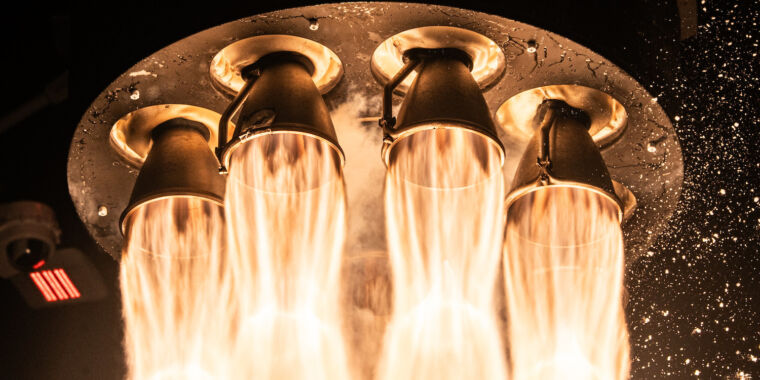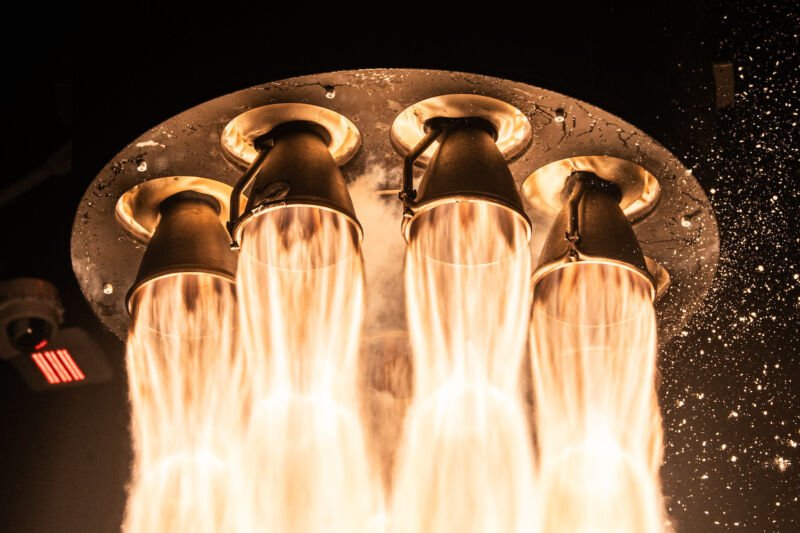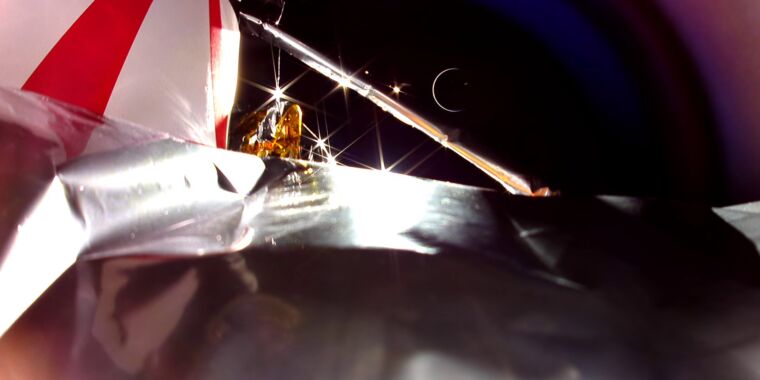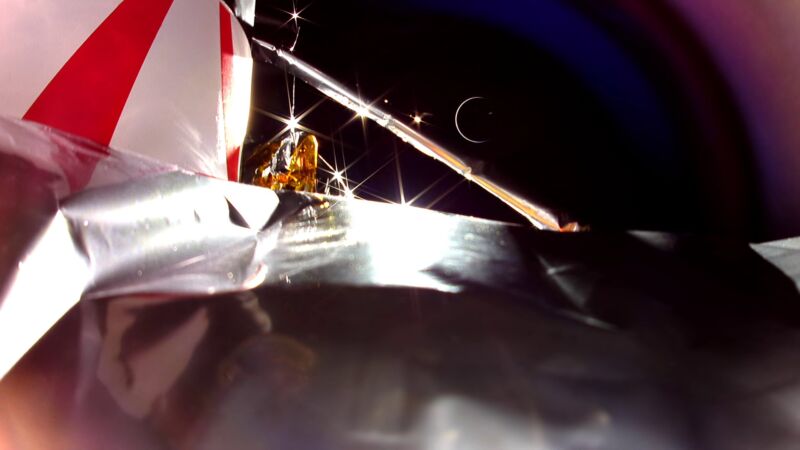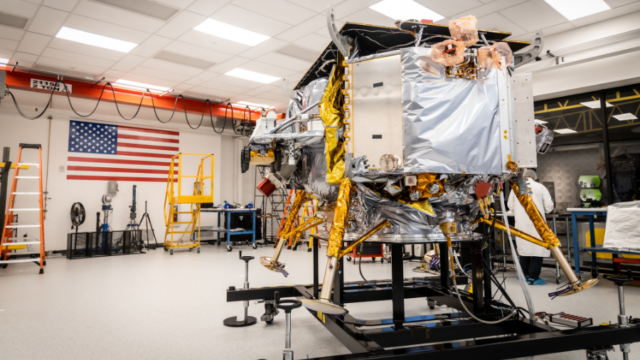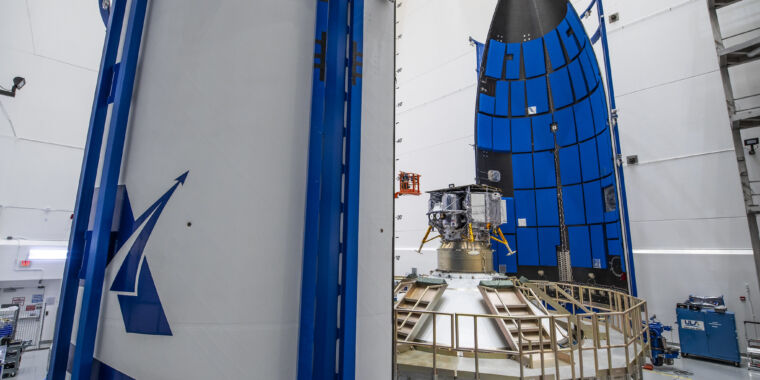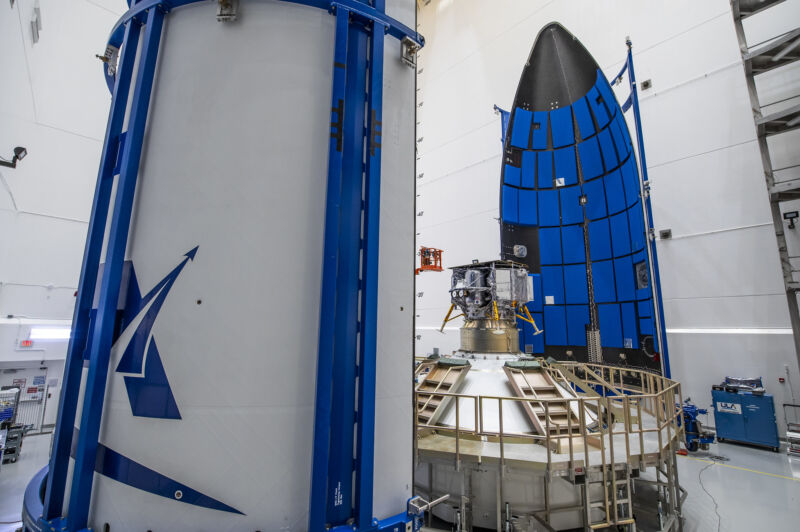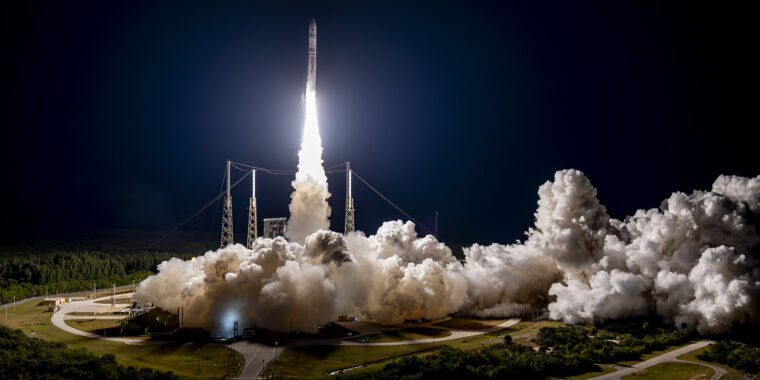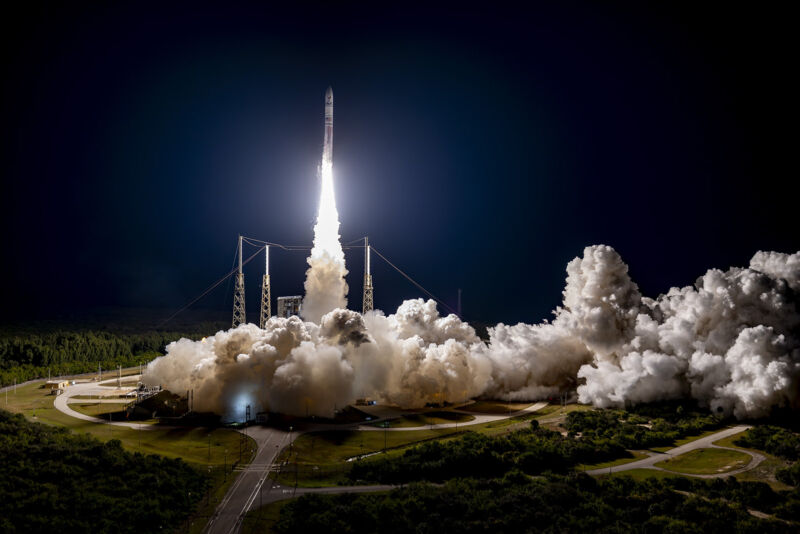Rocket Report: Russia’s rocket engine predicament; 300th launch to the ISS
North Korea test-fired a powerful new solid rocket motor for its next-generation ICBM.
A Soyuz-2.1a rocket is propelled by kerosene-fueled RD-107A and RD-108A engines after lifting off Thursday with a resupply ship bound for the International Space Station. Credit: Roscosmos
Welcome to Edition 8.10 of the Rocket Report! Dear readers, if everything goes according to plan, four astronauts are less than six months away from traveling around the far side of the Moon and breaking free of low-Earth orbit for the first time in more than 53 years. Yes, there are good reasons to question NASA’s long-term plans for the Artemis lunar program—the woeful cost of the Space Launch System rocket, the complexity of new commercial landers, and a bleak budget outlook. But many of us who were born after the Apollo Moon landings have been waiting for this moment our whole lives. It is almost upon us.
As always, we welcome reader submissions. If you don’t want to miss an issue, please subscribe using the box below (the form will not appear on AMP-enabled versions of the site). Each report will include information on small-, medium-, and heavy-lift rockets, as well as a quick look ahead at the next three launches on the calendar.

North Korea fires solid rocket motor. North Korea said Tuesday it had conducted the final ground test of a solid-fuel rocket engine for a long-range ballistic missile in its latest advancement toward having an arsenal that could viably threaten the continental United States, the Associated Press reports. The test Monday observed by leader Kim Jong Un was the ninth of the solid rocket motor built with carbon fiber and capable of producing 1,971 kilonewtons (443,000 pounds) of thrust, more powerful than past models, according to the North’s official Korean Central News Agency.
Mobility and flexibility … Solid-fueled intercontinental ballistic missiles, or ICBMs, have advantages over liquid-fueled missiles, which have historically comprised the bulk of North Korea’s inventory. Solid rocket motors can be stored for longer periods of time and are easier to conceal, transport, and launch on demand. The new solid rocket motor will be used on a missile called the Hwasong-20, according to North Korean state media. The AP reports some analysts say North Korea may conduct another ICBM test around the end of the year, showcasing its military strength ahead of a major ruling party congress expected in early 2026.
The easiest way to keep up with Eric Berger’s and Stephen Clark’s reporting on all things space is to sign up for our newsletter. We’ll collect their stories and deliver them straight to your inbox.
Astrobotic eyes Andøya. US-based lunar logistics company Astrobotic and Norwegian spaceport operator Andøya Space have signed a term sheet outlining the framework for a Launch Site Agreement, European Spaceflight reports. The agreement, once finalized, will facilitate flights of Astrobotic’s Xodiac lander testbed from the Andøya Space facilities. The Xodiac vertical takeoff, vertical landing rocket was initially developed by Masten Space Systems to simulate landing on the Moon and Mars. When Masten filed for bankruptcy in 2022, Astrobotic acquired its intellectual property and assets, including the Xodiac vehicle.
Across the pond … So far, the small Xodiac rocket has flown on low-altitude atmospheric hops from Mojave, California, reaching altitudes of up to 500 meters, or 1,640 feet. The agreement between Astrobotic and Andøya paves the way for “several” Xodiac flight campaigns from Andøya Space facilities on the Norwegian coast. “Xodiac’s presence at Andøya represents a meaningful step toward delivering reliable, rapid, and cost-effective testing and demonstration capabilities to the European space market,” said Astrobotic CEO John Thornton.
Ursa Major breaks ground in Colorado. Ursa Major on Wednesday said it has broken ground on a new 400-acre site where it will test and qualify large-scale solid rocket motors for current and future missiles, including the Navy’s Standard Missile fleet, Defense Daily reports. The new site in Weld County, Colorado, north of Denver, will be ready for testing to begin in the fourth quarter of 2025. Ursa Major will be able to conduct full-scale static firings, and drop and temperature storage testing for current and future missile systems.
Seeking SRM options … Ursa Major said the new facility will support national and missile defense programs. The company’s portfolio includes solid rocket motors (SRMs) ranging from 2 inches to 22 inches in diameter for missiles like the Stinger, Javelin, and air-defense interceptors. Ursa Major aims to join industry incumbents Northrop Grumman, L3Harris, and newcomer Anduril as a major supplier of SRMs to the government. “This facility represents a major step forward in our ability to deliver qualified SRMs that are scalable, flexible, and ready to meet the evolving threat environment,” said Dan Jablonsky, CEO of Ursa Major, in a statement. “It’s a clear demonstration of our commitment and ability to rapidly advance and expand the American-made solid rocket motor industrial base that the country needs, ensuring warfighters will have the quality and quantity of SRMs needed to meet mission demands.”

Falcon 9 launches first satellites in a military megaconstellation. The first 21 satellites in a constellation that could become a cornerstone for the Pentagon’s Golden Dome missile-defense shield successfully launched from California Wednesday aboard a SpaceX Falcon 9 rocket, Ars reports. The Falcon 9 took off from Vandenberg Space Force Base, California, and headed south over the Pacific Ocean, reaching an orbit over the poles before releasing the 21 military-owned satellites to begin several weeks of activations and checkouts.
First of many … These 21 satellites will boost themselves to a final orbit at an altitude of roughly 600 miles (1,000 kilometers). The Pentagon plans to launch 133 more satellites over the next nine months to complete the build-out of the Space Development Agency’s first-generation, or Tranche 1, constellation of missile-tracking and data-relay satellites. Military officials have worked for six years to reach this moment. The Space Development Agency (SDA) was established during the first Trump administration, which made plans for an initial set of demonstration satellites that launched a couple of years ago. In 2022, the Pentagon awarded contracts for the first 154 operational spacecraft, including the ones launched Wednesday. “Back in 2019, when the SDA was stood up, it was to do two things. One was to make sure that we can do beyond line of sight targeting, and the other was to pace the threat, the emerging threat, in the missile-warning and missile-tracking domain. That’s what the focus has been,” said Gurpartap “GP” Sandhoo, the SDA’s acting director.
Another Falcon 9 was delayed three times. SpaceX scrubbed launching a communications satellite from an Indonesian company for a third consecutive day Wednesday, Spaceflight Now reports. Possible technical issues got in the way of a launch attempt Wednesday evening after back-to-back days of weather delays at Cape Canaveral Space Force Station, Florida. The Falcon 9 finally launched Thursday evening with the Boeing-built Nusantara Lima communications satellite, targeting a geosynchronous transfer orbit. It’s the latest satellite from the Indonesian company Pasifik Satelit Nusantara.
A declining market … This was just the fifth geosynchronous communications satellite to launch on a commercial rocket this year, all by SpaceX. There were 21 such satellites that launched on commercial vehicles in 2015, including SpaceX’s Falcon 9, Europe’s Ariane 5, Russia’s Proton, ULA’s Atlas V, and Japan’s H-IIA. Much of the world’s launch capacity today is used to deploy smaller communications satellites into low-Earth orbit, primarily for broadband connectivity rather than for the video broadcast market once dominated by higher-altitude geosynchronous satellites.
Putin urges Russia to build more rocket engines. Russian President Vladimir Putin urged aerospace industry leaders on September 5 to press on with efforts to develop booster rocket engines for space launch vehicles and build on Russia’s longstanding reputation as a leader in space technology, Reuters reports. Putin, who spent the preceding days in China and the Russian far eastern port of Vladivostok, flew to the southern Russian city of Samara, where he met industry specialists and toured the Kuznetsov design bureau engine manufacturing plant.
A shell of its former self … “It is important to consistently renew production capacity in terms of engines for booster rockets,” Russian news agencies quoted Putin as saying during the visit. “And in doing so, we must not only meet our own current and future needs but also move actively on world markets and be successful competitors.” The Kuznetsov plant in Samara builds medium-class RD-107 and RD-108 engines for Russia’s Soyuz-2 rockets, which launch Russian military satellites and crew and cargo to the International Space Station. Their designs can be traced to the dawn of the Space Age nearly 70 years ago. Meanwhile, the outlook for heavier-duty Russian rocket engines is murky, at best. Russia’s most-flown large rocket engine in the post-Cold War era, the RD-180, produced by a company called Energomash, is out of production after the end of sales to the United States.
India nabs a noteworthy launch contract. Astroscale, a satellite servicing and space debris mitigation company based in Japan, has selected India’s Polar Satellite Launch Vehicle (PSLV) to deliver a small satellite named ISSA-J1 to orbit in 2027. This is an interesting mission. The ISSA-J1 spacecraft will fly up to two large pieces of satellite debris in orbit to image and inspect them. ISSA-J1, developed in partnership with the Japanese government, is one in a series of Astroscale missions testing different ways of approaching, monitoring, capturing, and refueling other objects in space. The launch agreement was signed between Astroscale and NewSpace India Limited, the commercial arm of India’s space agency.
Rideshare not an option … “We selected NSIL after thorough evaluations of more than 10 launch service providers over the past year, considering technical capabilities, track record, cost, and other elements,” said Eddie Kato, president and managing director of Astroscale Japan. India’s PSLV is right-sized for a mission like this. ISSA-J1 is a rarity in that it must launch on a dedicated rocket because it has to reach a specific orbit to line up with the pieces of space debris it will approach and inspect. Rideshare launches, such as those that routinely fly on SpaceX’s Falcon 9 rocket, are cheaper but go to standard orbits popular for many different types of satellite missions. A dedicated launch on a Falcon 9 would presumably have been more expensive than a flight on India’s smaller PSLV. Rocket Lab’s Electron, another rocket popular for dedicated launches of small satellites, lacks the performance required for Astroscale’s mission.
Russian cargo en route to ISS. Another cargo ship is flying to humanity’s orbital outpost with the successful launch of Russia’s Progress MS-32 supply freighter Thursday from the Baikonur Cosmodrome in Kazakhstan, NASASpaceflight.com reports. The supply ship launched aboard a Soyuz-2.1a rocket and arrived in orbit about nine minutes later, kicking off a two-day pursuit of the International Space Station. This was the 300th launch of an assembly, crew, or cargo mission to the ISS since 1998, including a handful of missions that didn’t reach the complex due to rocket or spacecraft failures.
Important stuff … The Progress MS-32 cargo craft will dock with the aft port of the space station’s Russian Zvezda service module Saturday. The payloads flying on the Progress mission include food, experiments, clothing, water, air, and propellant to be pumped into the space station’s onboard tanks. The spacecraft will also reboost the lab’s orbit.

Metallic tiles? Not so great. It has been two weeks since SpaceX’s last Starship test flight, and engineers have diagnosed issues with its heat shield, identified improvements, and developed a preliminary plan for the next time the ship heads into space, Ars reports. Bill Gerstenmaier, a SpaceX executive in charge of build and flight reliability, presented the findings Monday at the American Astronautical Society’s Glenn Space Technology Symposium in Cleveland. The test flight went “extremely well,” Gerstenmaier said, but he noted some important lessons learned with the ship’s heat shield.
Crunch wrap reigns supreme … “We were essentially doing a test to see if we could get by with non-ceramic tiles, so we put three metal tiles on the side of the ship to see if they would provide adequate heat control, because they would be simpler to manufacture and more durable than the ceramic tiles. It turns out they’re not,” Gerstenmaier said. “The metal tiles… didn’t work so well.” One bright spot with the heat shield was the performance of a new experimental material around and under the tiles. “We call it crunch wrap,” Gerstenmaier said. “It’s like a wrapping paper that goes around each tile.” On the next Starship flight, SpaceX will likely cover more parts of the heat shield with this crunch wrap material. Gerstenmaier said the inaugural flight of Starship Version 3, with upgraded engines and more fuel, is now set to occur next year.
An SLS compromise might be afoot in DC. The Trump administration is seeking to cancel NASA’s Space Launch System rocket after two more flights, but key lawmakers in Congress, including Republican Sen. Ted Cruz of Texas, aren’t ready to go along. So is this an impasse? Possibly not, as sources say the White House and Congress may not be all that far apart on how to handle this. The solution involves canceling part of the SLS rocket now, but not all of it, Ars reports.
Goodbye EUS? … The compromise might be to cancel a large new upper stage for the SLS rocket called the Exploration Upper Stage. This would save NASA billions of dollars, and the agency could instead procure commercial upper stages, such as those built by United Launch Alliance or Blue Origin, to fly on SLS rockets after NASA’s Artemis III mission. It would also eliminate the need for NASA to finish building an expensive new launch tower at Kennedy Space Center, Florida. The upper stage flying on the first three SLS missions is no longer in production. Sources indicated to Ars that Blue Origin has already begun work on a modified version of its New Glenn upper stage that could fit within the shroud of the SLS rocket.
Next three launches
Sept. 13: Soyuz-2.1b | Glonass-K1 No. 18L | Plesetsk Cosmodrome, Russia | 02: 30 UTC
Sept. 13: Falcon 9 | Starlink 17-10 | Vandenberg Space Force Base, California | 15: 41 UTC
Sept. 14: Falcon 9 | Cygnus NG-23 | Cape Canaveral Space Force Station, Florida | 22: 11 UTC

Rocket Report: Russia’s rocket engine predicament; 300th launch to the ISS Read More »
